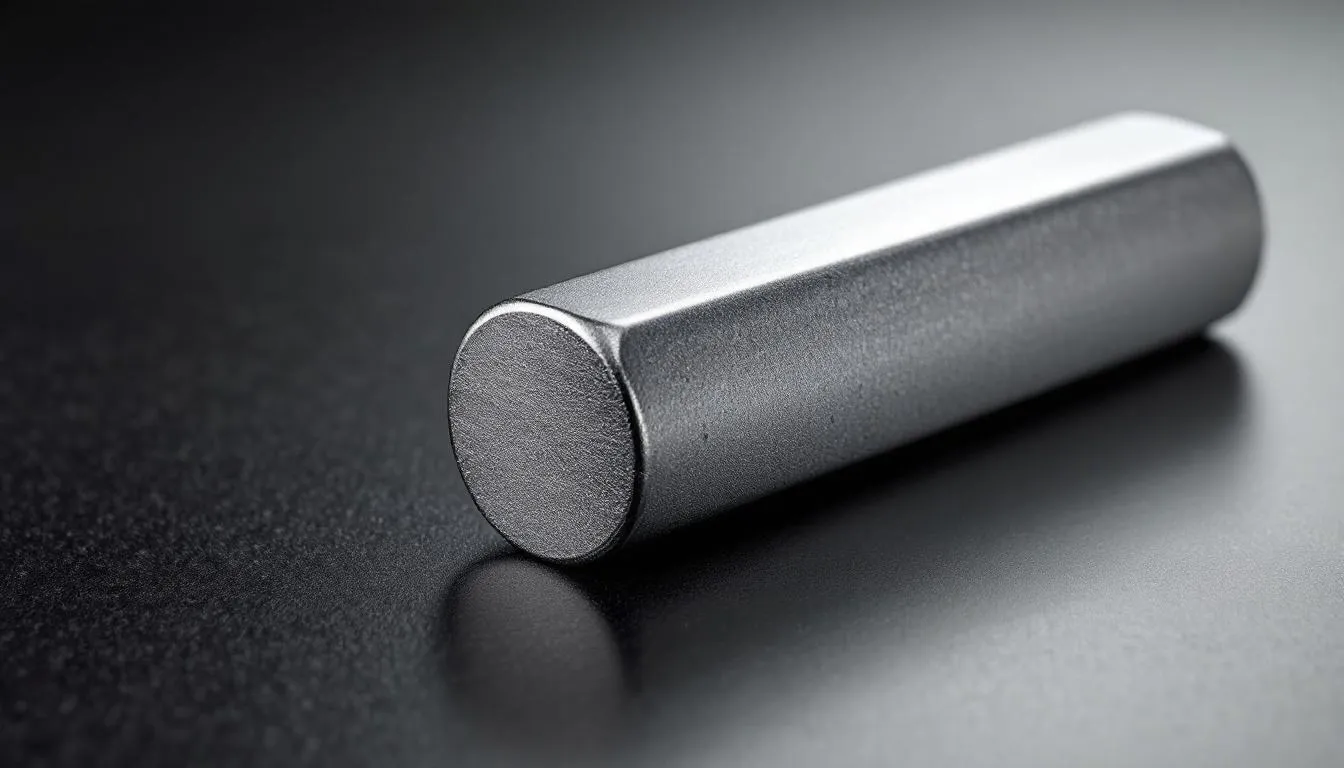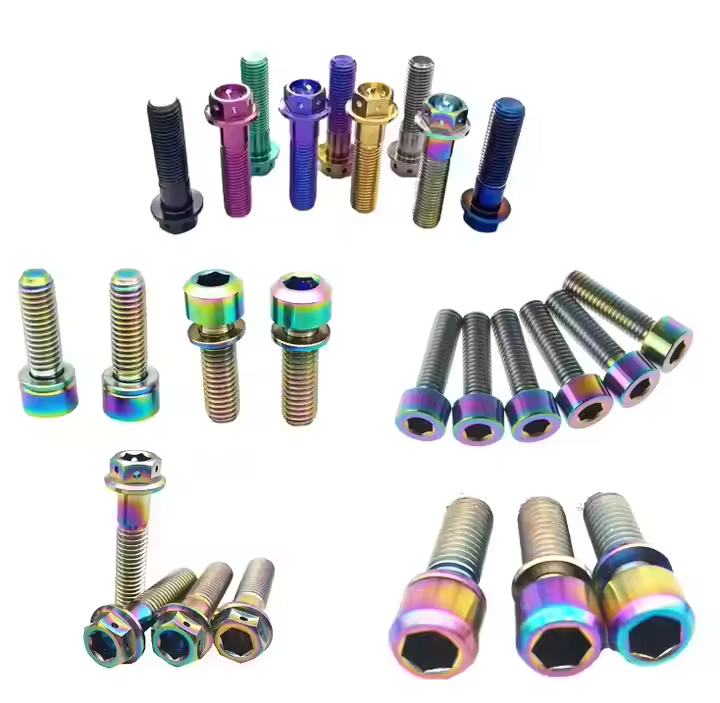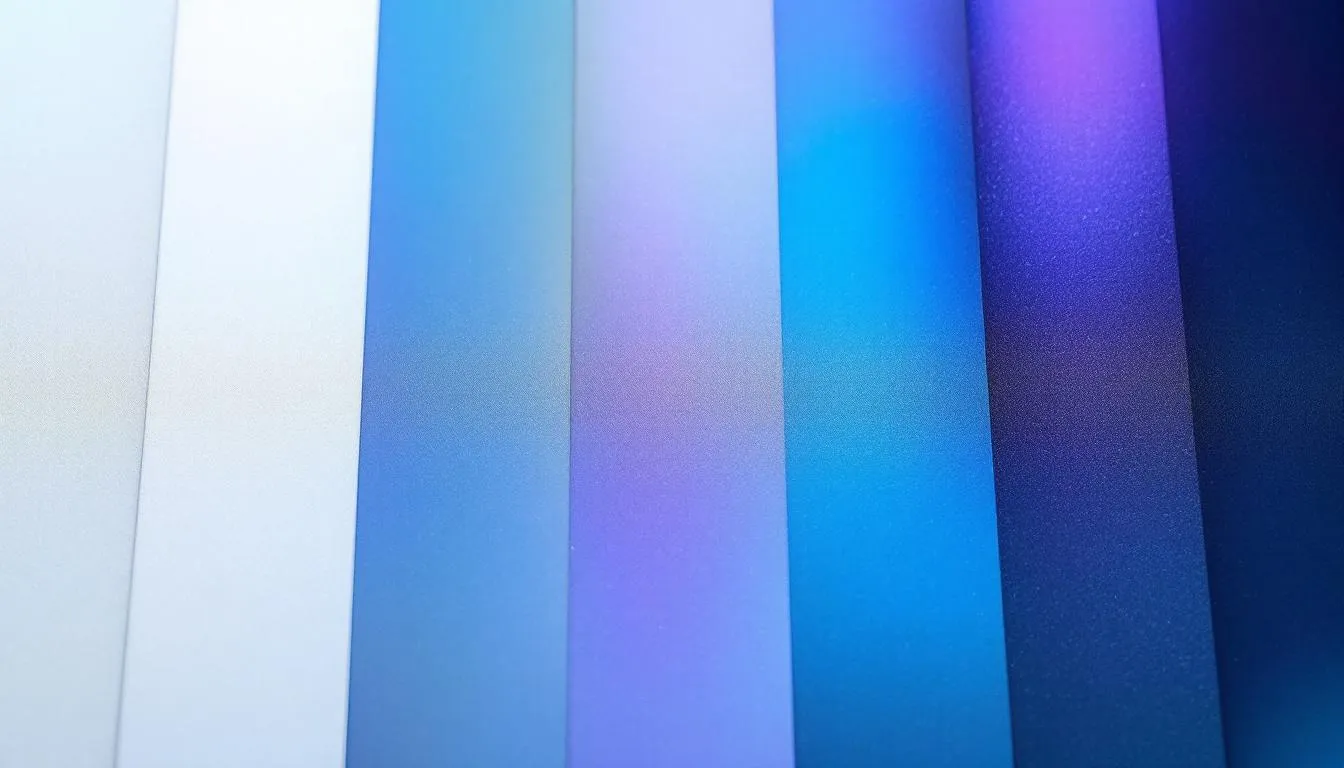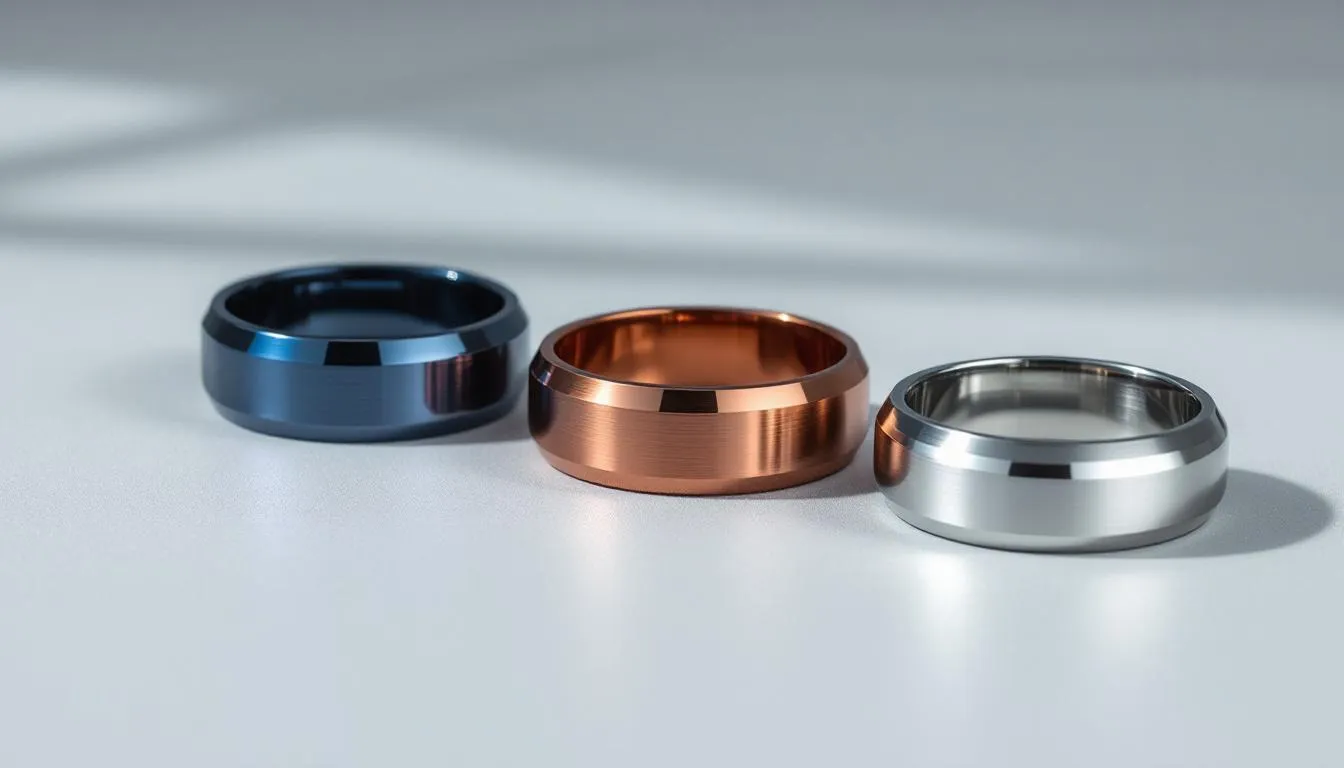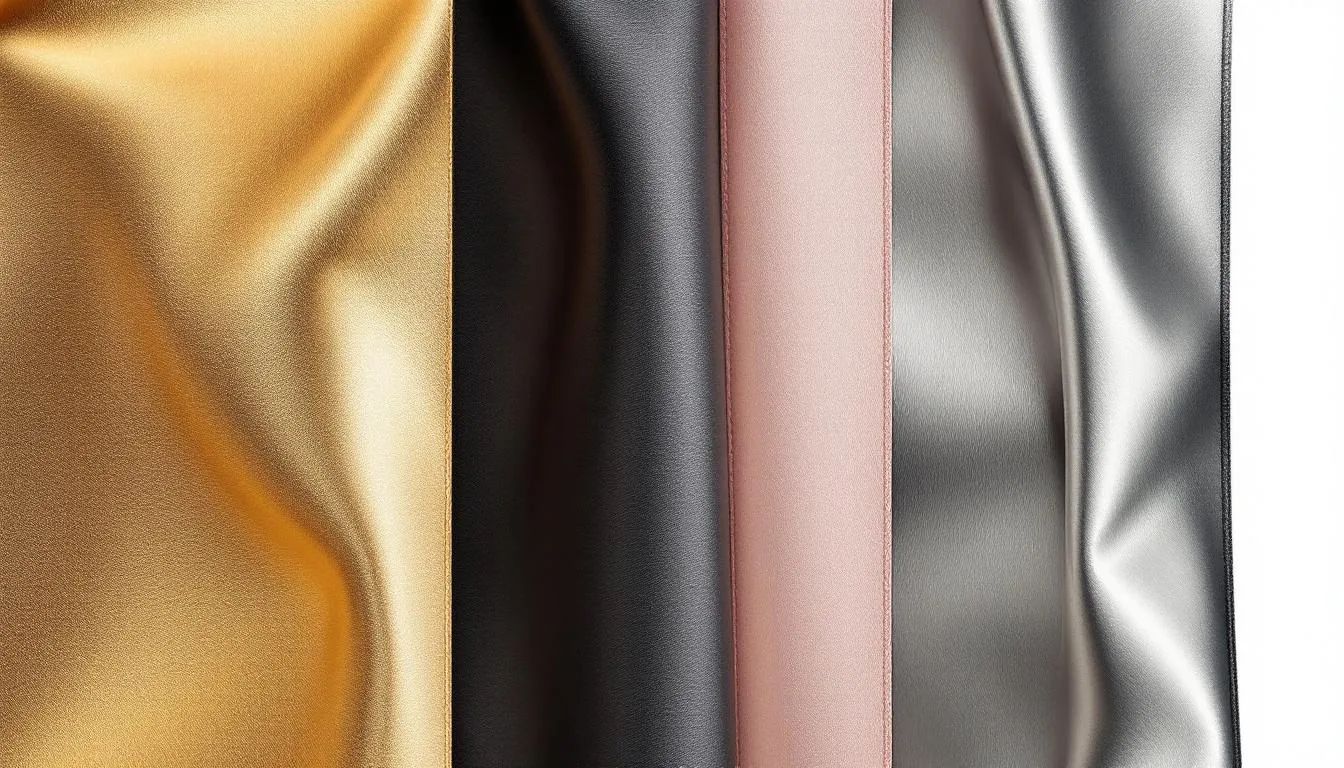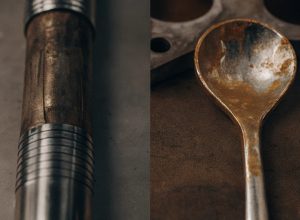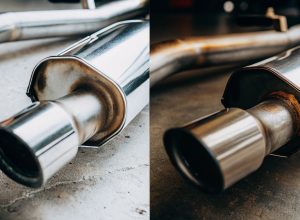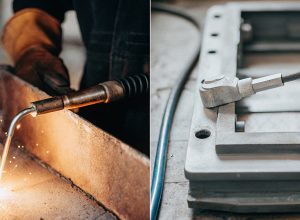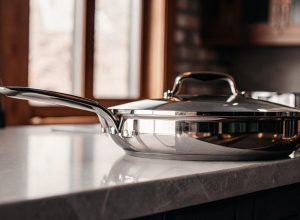Ever wondered what titanium color looks like? In its purest form, titanium is a sleek silvery-gray, but its color can transform into a vibrant spectrum through anodizing. This article dives into how titanium’s color changes and its uses across various fields like medicine, jewelry, and aerospace. Discover the fascinating world of titanium color and its practical applications.
Key Takeaways
- Titanium’s natural color is silvery-gray with a dynamic oxide layer that can change due to environmental factors, crucial for stability in marine applications.
- Anodizing titanium enables a wide spectrum of colors, enhancing aesthetic appeal and corrosion resistance, with voltage and oxide layer thickness being critical for achieving desired hues.
- Applications of anodized titanium span industries such as medical devices, jewelry, and aerospace, providing both functional and aesthetic benefits while maintaining durability and requiring specific maintenance practices.
The Natural Color of Titanium
In its purest form, pure titanium presents a silvery-gray appearance that is both sleek and modern. This natural color, often characterized by a subtle bluish tinge, has become synonymous with the metal itself. However, don’t be fooled by its seemingly uniform appearance. Environmental factors, such as exposure to saltwater, can slightly alter the surface color of titanium over time, giving it a unique patina that varies with each piece.
In marine applications, the color variation due to oxidation is more than a visual quirk—it’s crucial for surface stability in harsh environments. The natural color of titanium oxide is dynamic, interacting with its surroundings and adding complexity to this fascinating metal.
How Does Anodizing Change Titanium’s Color?
Anodizing titanium is like waving a magic wand over it, transforming its natural silvery-gray into a spectrum of vibrant colors. This electrochemical process manipulates the metal’s oxide layer, not just enhancing its appearance but also boosting its protection against the elements. Imagine being able to choose from a range of colors, such as:
- Bronze
- Purple
- Blue
- Gold
- Teal Each hue is a testament to the precision and control involved in the anodizing process.
The key to achieving these dark colors lies in the careful control of the anodizing variables. Voltage, immersion time, and the thickness of the oxide layer all play crucial roles that directly affect the final color outcome.
Leading aerospace suppliers use anodizing for both aesthetic reasons and for identification and corrosion control, a practice adopted for our aerospace-grade titanium. This process is a functional enhancement that adds value across industries.
Role of Oxide Layer Thickness
The thickness of the oxide layer is the secret sauce in the anodizing process. Depending on how thick this thin layer is, the colors produced can vary dramatically. For example, to achieve a bronze hue, the oxide layer needs to be between 300 to 350 angstroms thick, while a green color requires a thickness of 500 to 550 angstroms. This range, generally between 300 to 550 angstroms, is where the magic happens.
In our R&D lab, we’ve discovered that the precise control of these oxides thickness is essential, especially for medical-grade components like implants. Even the slightest deviation can result in significant color differences, which is why meticulous attention to detail is paramount. Oxygen is a crucial element in many of these processing processes.
This level of precision ensures that the colors are not only vibrant but also consistent, meeting the high standards required in light medical applications.
Voltage and Color Relationship
Voltage is another critical factor in the anodizing process. Different voltages can produce a wide spectrum of colors, making voltage control essential for achieving the desired hue. For instance, a slight adjustment in voltage can mean the difference between a deep blue and a vibrant purple. This relationship between voltage and color is crucial for producing the full range of hues visible in anodized titanium.
In the medical device industry, fine voltage control is emphasized to distinguish between different types of implants visually. This practice ensures that each component is easily identifiable, reducing the risk of errors during surgical procedures. Our adherence to these standards guarantees that our titanium products meet the highest quality and safety benchmarks.
Titanium Color Chart
Creating a titanium color chart is like painting with electricity. The voltage range for anodizing titanium typically falls between 15 to 110 volts, with each voltage level producing a unique color. For example, achieving a bronze color requires about 16 volts. However, it’s worth noting that there are no industry-wide standards for defining specific colors in Type 3 titanium anodizing.
This lack of standardization means that in-house calibration is crucial for ensuring predictable color outcomes. Our clients in the luxury goods sector, for instance, demand consistent and precise colors, which we achieve through meticulous calibration and quality control, including color coding.
While some colors like red are unattainable through anodizing, the range of available different colors still offers plenty of shiny creative possibilities with paint.
Practical Applications of Colored Titanium
Colored titanium isn’t just about aesthetics; it’s a marriage of beauty and functionality. Anodizing improves corrosion resistance and enhances wear resistance, making it ideal for a variety of applications. From medical devices to jewelry, and from aerospace to automotive industries, the vibrant hues of anodized titanium are making waves across sectors.
Next, we delve into specific applications to showcase the versatility and appeal of this remarkable air forming contrast technology material.
Medical Devices and Implants
In the medical field, anodized titanium serves as a functional necessity beyond its colorful appearance. Orthopedic surgeons use color-coded titanium devices like bone screws and fixation plates to quickly and accurately specify the parts they need during surgery. The absence of dyes in the anodizing process enhances the biomedical safety of these orthopedic implants, making them non-toxic to humans.
Although the anodized color maintains its vibrancy for 48-72 hours post-implantation, it eventually fades due to body conditions. To ensure traceability, laser marking is performed post-anodization, complying with ISO and medical-grade standards. This practice ensures that each implant can be properly identified, reducing the risk of complications and improving patient outcomes.
Jewelry and Fashion
Anodized titanium has taken the jewelry and fashion world by storm. Its wide range of vibrant colors and high resistance to tarnishing make it a popular choice for designers. Unlike traditional metals, anodized titanium is lightweight, making it comfortable to wear for extended periods.
Designers across Europe and Asia are increasingly favoring titanium over conventional metals and other metals due to its hypoallergenic properties and the stunning array of colors that anodizing can produce. Be it a statement necklace or sleek earrings, anodized titanium offers a unique blend of style and practicality that is hard to match.
Aerospace and Automotive
In the aerospace and automotive industries, titanium is prized for its excellent strength-to-weight ratio. One of the most common titanium alloys used in aircraft is Titanium 6AL-4V, accounting for nearly half of the titanium alloy used in aviation. This material has been a cornerstone in aerospace engineering since the 1950s, with the Orenda Iroquois jet engine being one of its early applications.
Colored titanium components are now making their way into luxury automotive designs, offering both aesthetic appeal and performance benefits. In automotive racing, titanium’s low weight and high strength contribute to overall performance, making it a material of choice for high-end manufacturers.
At Shaanxi Titonest, we supply 6AL-4V titanium components to European automotive OEMs focused on both performance and visual enhancement in luxury segments.
Best Practices for Achieving Desired Colors
Achieving the perfect color in anodized titanium is an art requiring meticulous attention. Surface preparation and voltage control are crucial; inconsistent surfaces can lead to varying colors, while precise voltage adjustments achieve specific shades.
Let’s explore best practices in surface preparation and timing and voltage control to achieve the highest standards in titanium anodizing.
Surface Preparation
Key factors in successful titanium anodizing include:
- Surface preparation as the foundation of the process.
- Maintaining a consistent temperature to achieve uniform coloration.
- Thorough cleaning to remove all contaminants that could interfere with anodizing and ensure even oxide layer distribution.
- Using the right cleaning agents to prevent residues that can disrupt the anodizing process.
Different grades of titanium require varying levels of surface preparation:
- Purer grades, such as Grade 23, need more aggressive techniques to ensure high fidelity in color anodizing.
- Delaying anodizing after surface preparation can lead to unwanted oxide formation, causing color inconsistencies.
- Customizing pre-treatment for each grade ensures high fidelity in color anodizing processes.
Timing and Voltage Control
Timing and voltage control are crucial for achieving uniform and consistent anodized colors. Key points include:
- The colors achieved through anodizing depend on the voltage applied, which ranges from 10 to 100 volts.
- This voltage range can produce various shades on titanium, from subtle to vibrant hues.
- An oxide layer forms if anodizing doesn’t occur quickly after surface preparation.
- The oxide layer leads to splotchy colors.
In our aerospace projects, even minor timing delays after surface prep are flagged by QA, as they critically impact the oxide layer integrity. Ensuring that the anodizing process occurs promptly after surface preparation is essential for achieving the desired colors. This level of precision is what sets high-quality anodizing apart from the rest.
Maintenance and Durability of Colored Titanium
Anodized titanium is renowned for its durability and long-lasting aesthetic appeal. Unlike other materials, anodized titanium does not deteriorate in color due to UV exposure, maintaining its vibrant appearance over time. This makes it an excellent choice for applications where long-term appearance is crucial, such as in luxury goods and architectural elements.
However, the anodized color can wear off if exposed to harsh chemicals, abrasives, or high temperatures. While anodized titanium does not fade over time, ensuring its longevity requires proper maintenance.
Post-sales feedback from the marine industry confirms that anodized titanium’s color retention in harsh environments surpasses most expectations.
Common Issues and Solutions in Titanium Anodizing
Even with the best practices, issues can arise in the anodizing process. Mechanical abrasion can damage the colored oxide layer, leading to a loss of color. Environmental factors such as exposure to harsh chemicals and high temperatures can also negatively impact the visual properties of anodized titanium.
Color discrepancies in anodized titanium can be corrected by applying a high-alkaline cleaner to strip the oxide layer before redoing the anodizing. Having an in-house color recovery process ensures we minimize scrap rates and deliver consistently colored titanium parts, which is essential for B2B clients.
This approach allows us to maintain high standards and meet client expectations consistently.
Summary
Understanding the intricacies of titanium color, from its natural silvery-gray to the vibrant hues achieved through anodizing, opens up a world of possibilities. The anodizing process not only enhances the aesthetic appeal of titanium but also improves its functionality, making it a valuable material across various industries. From medical devices to jewelry, and from aerospace to automotive, colored titanium is making a significant impact.
As we continue to explore and innovate, the potential applications of colored titanium will only expand. Whether you’re a professional in the field or simply someone with a keen interest in materials science, the world of colored titanium offers endless opportunities for creativity and functionality. Embrace the color, and let titanium shine in all its glory.
Frequently Asked Questions
What is the natural color of titanium?
The natural color of titanium is silvery-gray, sometimes displaying a slight bluish hue. This characteristic is a result of its inherent properties.
How does anodizing change the color of titanium?
Anodizing alters the color of titanium by adjusting the thickness of the oxide layer through an electrochemical process, resulting in various colors such as bronze, purple, blue, and gold. The specific colors achieved vary based on the voltage applied.
What are the practical applications of colored titanium?
Colored titanium has practical applications in medical devices for color coding, in jewelry for its vibrant, hypoallergenic qualities, and in aerospace and automotive industries for its strength and aesthetic appeal.
How durable is the color on anodized titanium?
Anodized titanium is highly durable and retains its color well, even when exposed to UV light. However, it is susceptible to damage from harsh chemicals, abrasives, and extreme temperatures.
What are common issues in the anodizing process, and how can they be resolved?
Common issues in the anodizing process, such as mechanical abrasion and environmental exposure compromising the oxide layer, can be resolved by stripping the damaged layer with a high-alkaline cleaner and reapplying the anodizing treatment for consistent results.

